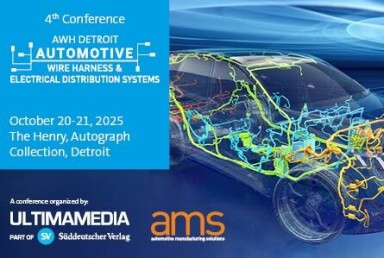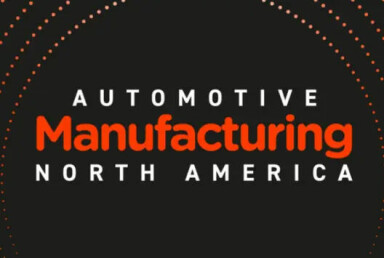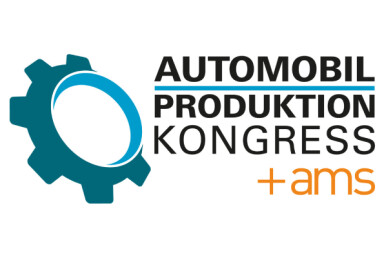Volkswagen’s plan to close two German assembly plants is an existential crisis for legacy auto – but only part of the solution
VW’s announcement marks a pivotal moment for Europe’s legacy OEMs with huge repercussions for German production and broader European supply chains. Daniel Harrison, automotive analyst at Ultima Media assesses the causes, potential remedies, and opportunities.

It is becoming increasingly apparent that the majority of legacy automotive manufacturers, and not just VW, have been struggling with the EV transition for a few years now, particularly as the rate of EV growth slows. For example, Volvo has scrapped its plan to sell only EVs by 2030, while Nissan has rethought its strategy because of slower-than-expected EV sales, and Ford has shifted its focus from EVs back to hybrids following disappointing EV sales.
Bringing the focus back to Europe and Volkswagen specifically, closing two plants may not seem significant in the context of its 114 global plants. However, VW Group recently announced large job cuts or a possible closure of its Audi plant in Brussels, and it is reported that VW may also close one or possibly two of its Chinese plants with partner SAIC. However, this latest announcement by VW is a much more significant moment as it is the first time in the company’s 87-year history that it has considered shutting down plants in its German industrial heartland.
But this is not entirely unexpected. In 2023, VW agreed with its works council a €10 billion ($11.5 billion) cost-reduction programme, including a 20% reduction in ‘administrative personnel costs.’
However, in response to industry price wars and tougher competition, VW reduced its prices significantly. These price cuts, claimed Daniela Cavallo, chair of the VW works council, have cost VW hundreds of millions of Euros in profits. In combination with restructuring expenses, these discounts have undermined VW’s efforts to reduce costs. As a result, Volkswagen’s automotive cash flow, a key metric, turned negative in the first half of 2024 to minus €100m ($115m), compared with a positive €2.5 billion ($2.9 billion) in the first half of 2023.
“The transition to electrification was always going to be challenging, but compounding economic factors, coupled with the rise of cheaper Chinese EVs, have escalated the situation into an existential crisis for VW”

Unsurprisingly in that context, head of the brand group core Thomas Schäfer has reportedly admitted that cost-saving plans have not met expectations. Furthermore, since 2023, overall market conditions have fundamentally changed, and the situation for VW has deteriorated significantly. Arno Antlitz, Volkswagen Group’s chief financial officer (CFO), stated that VW now has “a year, maybe two years, to turn things around.”
Daniela Cavallo, chair of the works council representing VW employees, commented: “As a result, the executive board is now questioning German plants, the in-house collective wage agreements, and the job security programme running until the end of 2029.” However, this fundamental shift in position from the VW board is a raising of the stakes and a clear divergence from its previous strategy. Fundamentally this is due to VW Group facing a number of evolving challenges on virtually every front, at home and abroad.

Fundamentally closing two plants alone will not save VW; it only temporarily addresses a small part of the company’s much larger structural problems.
This point was underscored by VW brand chief Schäfer, who remarked, “the situation is extremely tense and cannot be overcome by simple cost-cutting measures.” However, as the saying goes “Never let a good crisis go to waste.” If VW truly grasps the situation, it can use this opportunity to implement radical reform and reinvent itself for the electric era.
“Whilst uncertainty dominates the landscape, one thing is clear: this is a crucial inflection point for legacy automakers, particularly in Europe”
Manufacturing implications and opportunities
Smart Factory: To reduce costs, improve productivity, sustainability, speed to market and production flexibility, OEMs need to invest in and transition towards the Smart Factory concept.
Sustainability: Sustainability is not only about climate change; it is also about energy reduction, production efficiency and cost-cutting. As Automotive Manufacturing Solutions reported with design and manufacturing integration and digitalisation, these are key to cost and sustainability gains for BMW.
Electrification: VW has been proactive in the EV transition vertical integration, investing heavily in upstream raw materials, gigafactories and EV software. However, VW has lagged in developing an affordable mass-market EV, as well as hybrids as an interim measure.
Automation: Robotics, automation and production efficiency are closely linked with reducing labour costs. As EV production rises, the demand for more advanced automation increases as well.
Digitalisation: Increasing digitalisation is key to scaling battery cell production for EVs and achieving the economies of scale necessary to reduce battery and EV costs.
Manufacturing software: Investment in more efficient manufacturing and production software, such as, Mercedes-Benz’s connected factory software, boosts productivity.
Reducing complexity: Simplifying operations is one of the most powerful ways to cut costs. Daniela Cavallo, chair of the works council representing VW employees has suggested that instead of plant closures, the VW board should focus on simplifying operations and leveraging synergies across the VW Group. She referred to VW’s “documentation madness” and “salami-slicing tactics,” suggesting streamlining could save costs without drastic measures.
Innovation in manufacturing: Reducing parts complexity, known as the large parts strategy, can reduce costs and improve production speed. Gigacasting, pioneered by Tesla and adopted by GM, is one method to achieve this. While VW invested in this in 2022, results won’t reportedly materialise until 2026.
Leveraging JVs and partnerships: VW must leverage its partnerships and JVs more to drive down costs and become competitive within the EV space. Though progress has been made with partners like Xpeng and SAIC, VW remains behind the curve. For example, SAIC/MG are bringing solid-state batteries to market in budget EVs in 2025, but VW is not part of this technological advance, despite partially owning SAIC.
Artificial Intelligence (AI): AI is already improving production operations and efficiency in automotive manufacturing, and its potential use cases continue to grow.
Regionalisation/localisation: Shortening supply chains is critical to reducing costs and increasing EV affordability. VW‘s low-cost EV, planned for 2025, will depend heavily on this strategy. Given the company’s current challenges, the rollout cannot come soon enough.
What’s likely to happen?
The gravity of the numerous challenges facing VW means that drastic changes are inevitable. While the works council may strongly oppose the potential closure of the two German plants, clinging to the hope that sales will recover could ultimately lead to the collapse of the company – and with it, all the plants. The works council and unions are expected to push back against any threat to job security, arguing that such measures would undermine Germany’s long-standing social contact in industrial relations.
However, VW’s board would likely argue that these tough decisions are necessary to adapt to evolving market realities. Painful as it may be for all stakeholders, the company must prioritise long-term competitiveness in a rapidly moving market.
The only realistic alternative is business failure, and the German government will also not allow that.
Whether some form of compromise can be reached with unions, such as reduced workweeks or voluntary redundancy programmes, remains to be seen. However, such measures may not be enough, and only delay the inevitability of plant closures.
A potential domino effect
Volkswagen’s move to reconsider its job security scheme and explore plant closures may set a precedent for other OEMs across Europe and beyond. As the industry grapples with the same pressures, companies may be forced to radically restructure, merge, or seek alliances and partnerships to reduce costs and mitigate the risk of failure.
The transition to electrification was always going to be challenging, but compounding economic factors, coupled with the rise of cheaper Chinese EVs, have escalated the situation into an existential crisis for VW.
Whilst uncertainty dominates the landscape, one thing is clear: this is a crucial inflection point for legacy automakers, particularly in Europe, as they struggle to balance profitability, the EV transition and survival in a rapidly changing global automotive market.
Stay tuned to Automotive Manufacturing News. AMS will continue provide in-depth coverage of these topics throughout the year across digital, newsletters, print, reports, livestreams and events.


